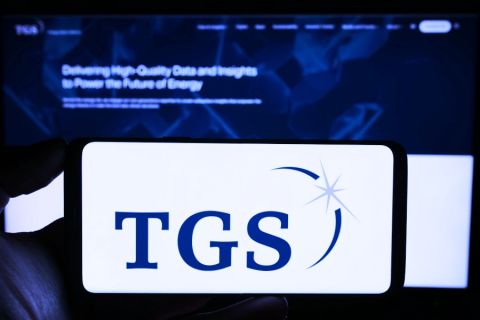President Joe Biden's administration on April 12 finalized a range of reforms designed to boost returns and address environmental harms from oil and gas drilling on public lands.
The new rules follow years of criticism from green and taxpayer groups that federal oil and gas development was not benefiting the public. Many of the changes formalize provisions in Biden's landmark climate change law, the 2022 Inflation Reduction Act (IRA).
Under the new policy, oil and gas companies will pay higher bonding rates to cover the cost of plugging abandoned oil and gas wells, as well as increased lease rents, minimum auction bids and royalty rates for the fuels they extract. The rules also limit drilling in sensitive wildlife and cultural areas.
"These are the most significant reforms to the federal oil and gas leasing program in decades, and they will cut wasteful speculation, increase returns for the public and protect taxpayers from being saddled with the costs of environmental cleanups," Interior Secretary Deb Haaland said in a statement.
About 10% of the nation's oil and gas comes from drilling on federally-owned land. An oil and gas industry trade group warned that higher costs to extract fuels from federal lands could boost U.S. reliance on foreign supplies.
"Overly burdensome land management regulations will put this critical energy supply at risk," American Petroleum Institute Vice President of Upstream Policy Holly Hopkins said in a statement.
Biden vowed during his 2020 election campaign to end federal oil and gas leasing as part of his agenda to combat climate change. But the IRA effectively guaranteed continued drilling rights auctions on federal lands for at least another decade as a concession to the powerful fossil fuel lobby.
Drillers are required to pay upfront bonds to cover future cleanups if they fail, and a 2019 government analysis found bonding levels were inadequate.
Minimum lease bonds will soar to $150,000 under the new rules from $10,000—a level unchanged since 1960.
Royalty rates will rise to 16.67% from 12.5%, and the minimum amount companies can bid at oil and gas auctions will increase to $10 an acre from $2. The rental rate for a 10-year lease will double to $3 an acre for the first two years, eventually rising to $15 per acre in the final years. The fees can be adjusted for inflation after 10 years.
Recommended Reading
TGS Starts Up Multiclient Wind, Metaocean North Sea Campaign
2024-05-07 - TGS is utilizing two laser imaging and ranging buoys to receive detailed wind measurements and metaocean data, with the goal of supporting decision-making in wind lease rounds in the German Bright.
Honeywell Bags Air Products’ LNG Process, Equipment Business for $1.8B
2024-07-10 - Honeywell is growing its energy transition services offerings with the acquisition of Air Products’ LNG process technology and equipment business for $1.81 billion.
TGS Awarded Ocean Bottom Node Data Acquisition Contract in North America
2024-07-17 - The six-month contract was granted by a returning client for TGS to back up the client’s seismic data capabilities for informed decision making.
PGS Gets Greenlight to Begin Surveying for Petrobras 4D Contract
2024-05-30 - After a long permitting process, PGS has secured the last permit needed to begin its large 4D survey contract with Petrobras at the Barracuda-Caratinga field offshore Brazil.
Chemex Agrees to FEED Contract for Verde’s NatGas-to-gasoline Plant
2024-06-05 - Verde said the project will be located in Martin County, Texas. Completion of Chemex’s FEED work is anticipated in early 2025.





